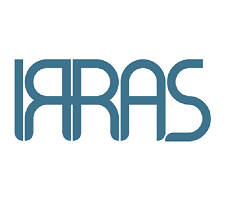 IRRAS has announced the publication of the first comparative study detailing the use of the company’s novel IRRAflow system. This study, which was conducted under the guidance of Adnan Siddiqui (University of Buffalo, New York, USA) and colleagues, is published in the journal Operative Neurosurgery, and concludes that the IRRAflow system resulted in favourable clinical outcomes in the treatment of chronic subdural haematomas (SDHs).
IRRAS has announced the publication of the first comparative study detailing the use of the company’s novel IRRAflow system. This study, which was conducted under the guidance of Adnan Siddiqui (University of Buffalo, New York, USA) and colleagues, is published in the journal Operative Neurosurgery, and concludes that the IRRAflow system resulted in favourable clinical outcomes in the treatment of chronic subdural haematomas (SDHs).
Siddiqui et al also found low complication and revision rates, faster clearance of collected blood, and reduced rates of catheter infections with the IRRAflow system, as compared to passive drainage using an external ventricular drain (EVD). That is according to a recent press release from IRRAS.
The study involved retrospectively analysing the treatment of 55 patients—21 treated with IRRAflow and 34 treated with passive drainage—that underwent propensity score matching to ensure appropriate similarities in patient demographics, baseline comorbidities, and haematoma volume.
After completion of the analysis, the surgeons found that the use of IRRAflow resulted in a statistically significantly higher rate of haematoma clearance (0.5±0.4 mL/day with IRRAflow vs 0.4±0.5 mL/day with passive drainage) and a statistically significant reduction in catheter-related infections. Additionally, in a subgroup analysis that looked at procedures performed using a burr hole alone, treatment with IRRAflow resulted in significantly lower haematoma expansion at discharge and significantly improved brain expansion.
Furthermore, the data from this clinical study showed that the use of IRRAflow resulted in a non-significant reduction in duration of catheter placement (3.7±2.2 with IRRAflow vs 4.4±4.1 with passive drainage), total length of hospital stay (6.8±3.0 with IRRAflow vs 10.6±16.2 with passive drainage), and rate of seizure activity (zero patients with IRRAflow vs thee patients with passive drainage), each suggesting a trend that may have shown significance with a larger sample size.
“These recently published clinical data confirm the positive impact that IRRAflow can have on the lives of patients suffering from intracranial bleeding,” said Will Martin, president and CEO of IRRAS. “This study is a critical next step in the growing pool of clinical evidence that demonstrates the impact of IRRAflow by providing head-to-head data that confirm that IRRAflow’s combination of irrigation and drainage results in both more effective blood removal, and safer clinical outcomes, than traditional treatment methods.”













